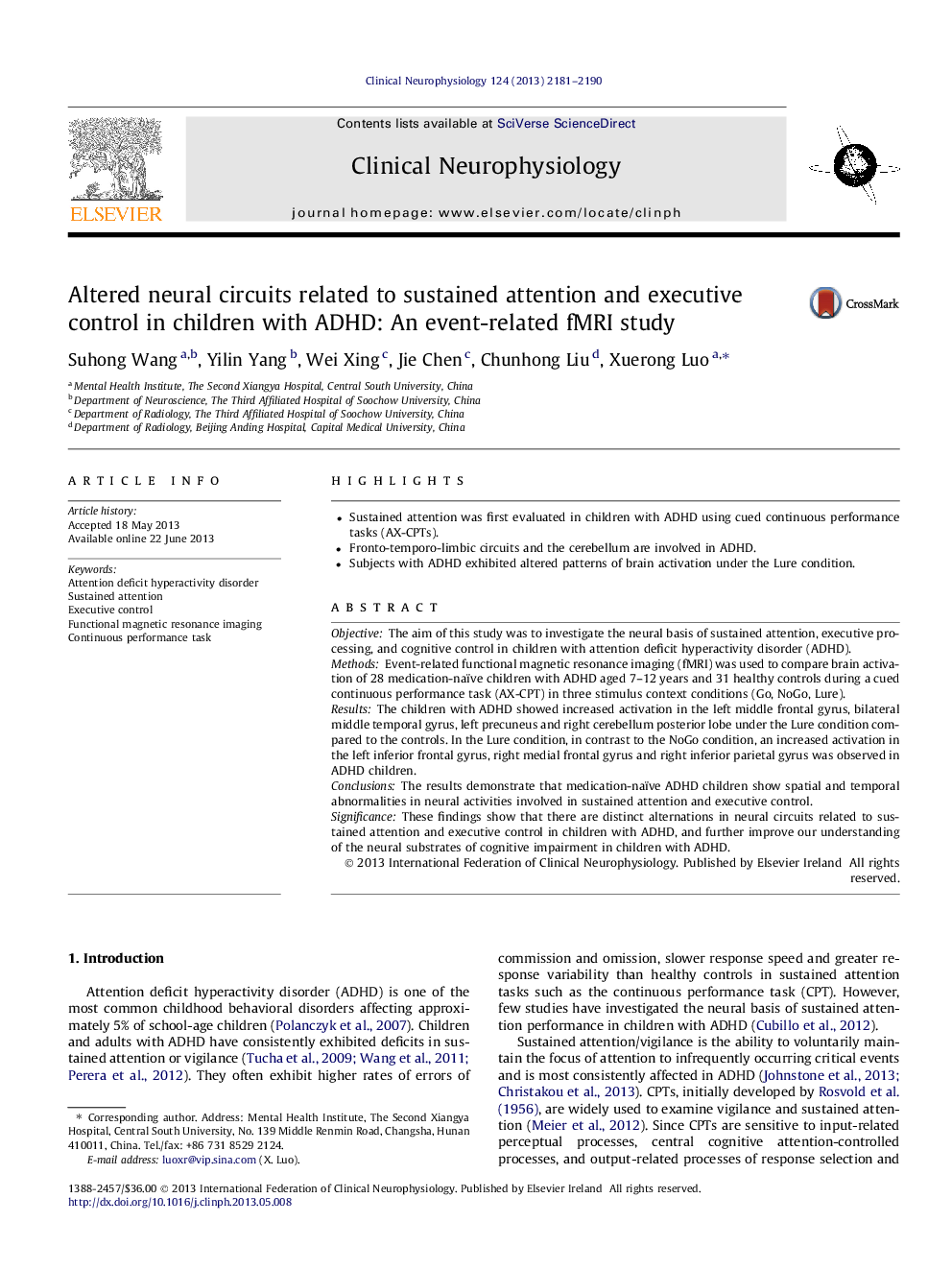| Article ID | Journal | Published Year | Pages | File Type |
|---|---|---|---|---|
| 3043320 | Clinical Neurophysiology | 2013 | 10 Pages |
•Sustained attention was first evaluated in children with ADHD using cued continuous performance tasks (AX-CPTs).•Fronto-temporo-limbic circuits and the cerebellum are involved in ADHD.•Subjects with ADHD exhibited altered patterns of brain activation under the Lure condition.
ObjectiveThe aim of this study was to investigate the neural basis of sustained attention, executive processing, and cognitive control in children with attention deficit hyperactivity disorder (ADHD).MethodsEvent-related functional magnetic resonance imaging (fMRI) was used to compare brain activation of 28 medication-naïve children with ADHD aged 7–12 years and 31 healthy controls during a cued continuous performance task (AX-CPT) in three stimulus context conditions (Go, NoGo, Lure).ResultsThe children with ADHD showed increased activation in the left middle frontal gyrus, bilateral middle temporal gyrus, left precuneus and right cerebellum posterior lobe under the Lure condition compared to the controls. In the Lure condition, in contrast to the NoGo condition, an increased activation in the left inferior frontal gyrus, right medial frontal gyrus and right inferior parietal gyrus was observed in ADHD children.ConclusionsThe results demonstrate that medication-naïve ADHD children show spatial and temporal abnormalities in neural activities involved in sustained attention and executive control.SignificanceThese findings show that there are distinct alternations in neural circuits related to sustained attention and executive control in children with ADHD, and further improve our understanding of the neural substrates of cognitive impairment in children with ADHD.
